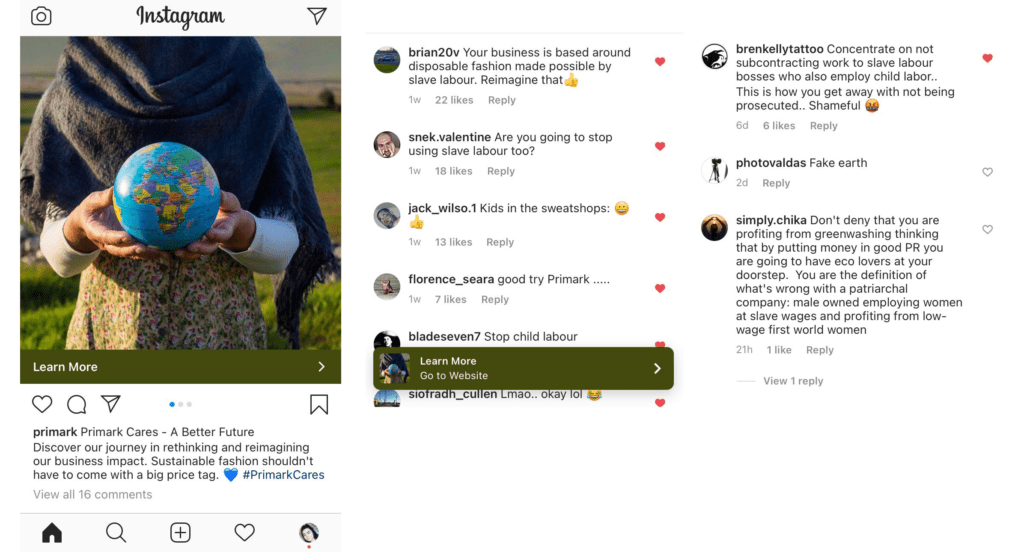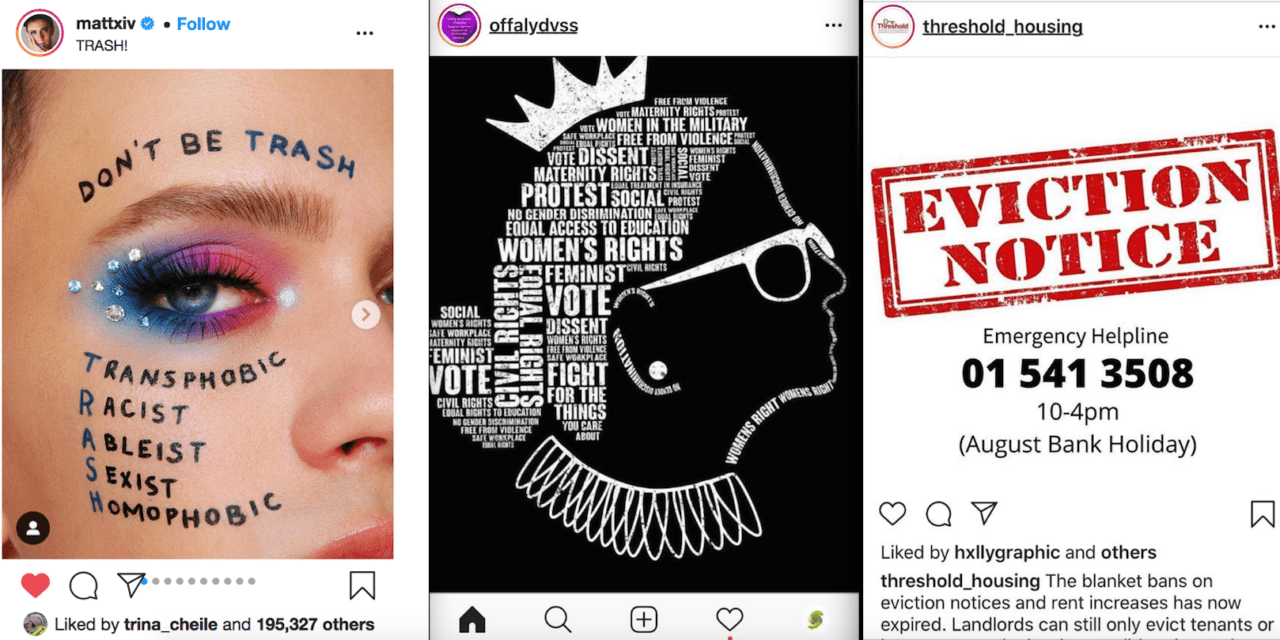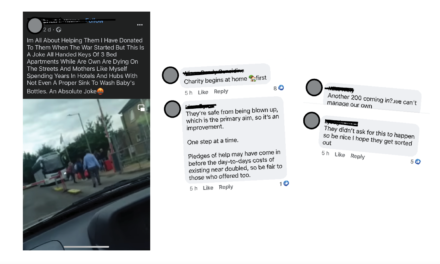Instagram is a vehicle for real change, writes CHLOE CAREY.
Instagram has been known for its endless pictures of food, vacations, and selfies. However, the platform has undergone a recent shift. Many, including myself, have noticed a rise in Instagram activism since the tragic death of George Floyd and the reigniting of the Black Lives Matter movement or BLM.
While statistics about police brutality were previously available, it was the gut-wrenching video of George Floyd’s death that caused mass outrage. The penny dropped as people came to realise how effective the spread of that video was in gaining support for the BLM movement.
Campaigners followed up by sharing infographics and short videos on social media explaining the importance of the movement and how to help. Much of this appeared on Instagram’s story feature.
INSPIRED
Inspired, many Instagrammers began sharing posts about other human rights issues. For example, after recent events in Poland, I saw many posts on my feed about LGBTQ+ issues. Many have also been posting about the Uyghur Muslim concentration camps in China.
The pandemic can also be credited for this recent uptake in activism on Instagram. Due to restrictions, the majority of people can’t go partying or on vacation, so they are unable to create their usual living-the-good-life content. Now, people are exploring topics outside of what they would usually post.
The Instagram algorithm favours aesthetically pleasing photos. Many users have caught on to this and been pairing information on social issues with aesthetically pleasing visuals. One of my favourite accounts that displays such characteristics is Matt Bernstein (@mattxiv) a make-up artist with 450,000 followers. He creates make-up looks which succinctly support and inform people of topics such as racism, homophobia, etc. People often share his posts to their stories. The picture below is an example of one of his many brilliant makeup looks.
However, many argue that activism on Instagram leads people to believe that their activism stops there. This brings me to the phenomenon of “performative activism” and if it outweighs the benefit of digital activism.
PERFORMATIVE ACTIVISM
Performative activism refers to “activism done to increase one’s social capital rather than because of ones devotion to a cause”.
Performative activism can be seen with the hashtag #blackouttuesday. Used on Tuesday, June 2nd, the idea was a collective action on Instagram to protest racism and police brutality. It was intended to express solidarity with the BLM movement and to focus attention on the unjust killing of Black people by the U.S. police force. However, many people did it because it was trendy or to avoid criticism for not showing outward support. Many thought they could post a black square, an act that takes a couple seconds, and then end their support there. They posted once to avoid criticism or to increase their likability and not because of a genuine interest or passion for the cause. Yet still, they were engaging in performative activism.
Performative activism can also be seen amongst companies and corporations through a term known as ‘wokewashing’. This term refers to the use of progressive-oriented marketing to prey on people’s social awareness, while failing on ethics.
It could be said that, with the ability for things to trend on Instagram, it provides a stage for performative activism, which is undoubtedly a negative aspect of the recent surge of digital activism.
CONCLUSION
Whilst performative activism gives a bad name to activism as a whole on Instagram, I think it is a rather small sacrifice to make to expose young people and users of Instagram to social issues. There are many benefits to using the platform for activism.
 One such benefit is that less known about topics, such as the fast fashion industry, are finally coming to fruition. Whilst many were aware of the negative environmental impact of fast fashion, now people are exposing brands including Fashion Nova, Primark, Levi’s and Mothercare for not paying their workers. The hashtag #payyourbangladeshworkers began trending, after it was made known that companies are withholding 3 billion dollars from factories in Bangladesh for orders which had already been shipped.
One such benefit is that less known about topics, such as the fast fashion industry, are finally coming to fruition. Whilst many were aware of the negative environmental impact of fast fashion, now people are exposing brands including Fashion Nova, Primark, Levi’s and Mothercare for not paying their workers. The hashtag #payyourbangladeshworkers began trending, after it was made known that companies are withholding 3 billion dollars from factories in Bangladesh for orders which had already been shipped.
I understand how many people might see the repost of an infographic on your story for 24 hours unhelpful. But the very engagement with digital activism helps the Instagram algorithm become more social justice friendly.
All in all, I think Instagram is a vehicle for real change. The platform has 800 million monthly active users, with 73% of them between the ages of 18-23 years old. If any social media platform is good for engaging in activism, it is Instagram. Young people will rise to be change-makers and politicians in the future, ones can reform and campaign for the greater good.
This shift from boasting and posting narcissistic content to campaigning on social issues is a huge shift, though I think people appreciate the reality check. It is not the end point of campaigning, but I do think it provides a good stepping stone for those to take activism further than the online world.





